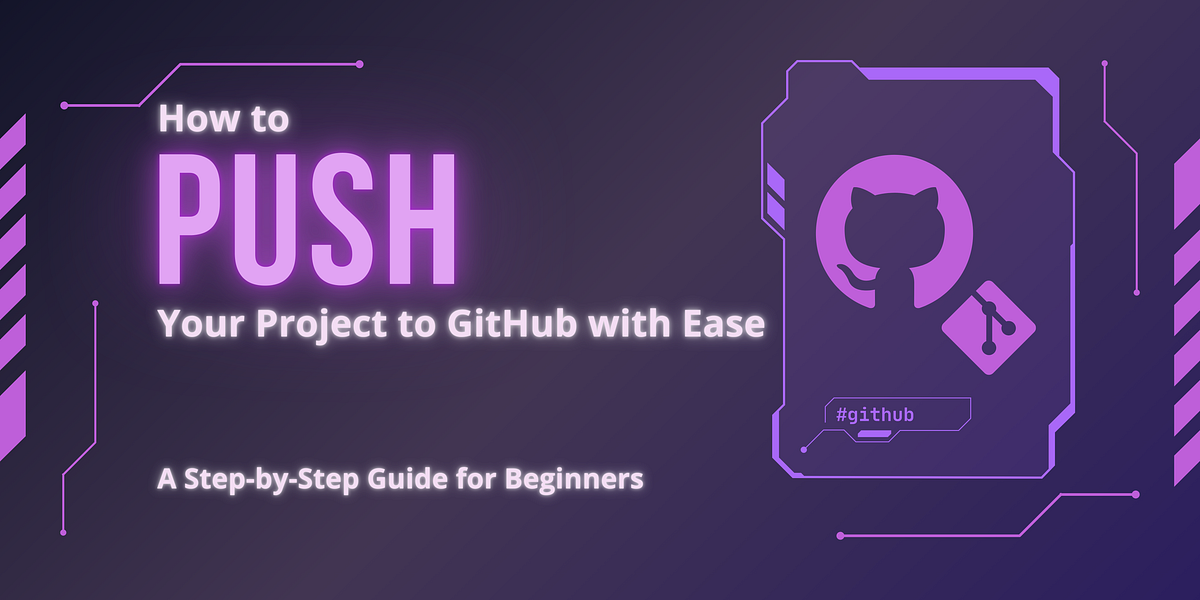Programming News
Dev
63

Image Credit: Dev
I’ve Built for 4 Years, Failed Quietly, and Now I’m Sharing Everything
- The author reflects on their journey in tech, starting with building products for over 4 years but facing challenges with marketing and user engagement.
- They emphasize the importance of putting work in front of people and learning from failed projects to iterate and improve.
- Collaborating with a co-founder, they have released 4 products, focusing on solving various problems and offering tools for free to encourage adoption.
- The success of one tool, Torgist, with nearly 300 users, motivates them to address issues of anonymity and abuse through the platform.
- The author discusses the serious approach taken with their team at Xnyder, analyzing problems, solutions, and competition to improve their products.
- They introduce StyleXui, a CSS framework, and share the satisfaction of seeing developers utilize it, including in projects like Agro Box.
- After addressing concerns about competing with established frameworks, the author enhances StyleXui to support building dashboards, as exemplified by Zypher Admin Dashboard.
- Making their first online sale with a premium version of Zypher, the author celebrates this milestone and acknowledges the support received.
- Future plans include developing a landing page for StyleXui and building a new dashboard using React, inviting collaboration from designers and developers.
- In concluding thoughts, the author encourages perseverance in the face of challenges, emphasizing the importance of continual growth and community support in the tech journey.
Read Full Article
3 Likes
Dev
384

Image Credit: Dev
Scroll Animation Without JavaScript: Introducing animation-timeline: view();
- Adding scroll-based animations to your website no longer requires JavaScript with the introduction of animation-timeline: view();, a CSS property.
- The animation-timeline: view(); property allows CSS animations to be triggered based on the element's scroll position in the viewport.
- You can define the animation's start and end points in relation to the element's position in the viewport using the animation-range property.
- animation-timeline: view(); offers a JavaScript-free, cleaner, performant, and easier-to-maintain solution for scroll-triggered animations, suitable for various effects like hero text animations and section reveals.
Read Full Article
23 Likes
Dev
149

Image Credit: Dev
reCharge:基于 SwiftUI 的全方位健康睡眠管理 App 实现原理与技术分享
- ReCharge is a SwiftUI-based sleep management app leveraging Apple technologies and AI for optimizing sleep quality and overall health.
- Core features include sleep data sync, AI-powered suggestions, sunlight exposure reminders, hydration tracking, Apple Watch companion app, subscription paywall, and localization support.
- Tech stack includes SwiftUI + Combine for UI, HealthKitManager for data permissions, and modules for networking, payments, localization, and persistence.
- Key modules like HealthKitManager for permissions, SunTimeAPIService for notifications, WatchConnectivityManager for syncing, and StoreKitManager for purchases are highlighted along with future improvements and project highlights.
Read Full Article
8 Likes
Medium
2.6k

Image Credit: Medium
How to Push Your Project to GitHub with Ease: A Step-by-Step Guide for Beginners
- Using Git and GitHub together allows you to back up projects, collaborate, and build a coding portfolio.
- Ensure Git is installed by checking the version number. Install Homebrew if not already installed.
- Set your name and email in Git configuration as they appear in every commit made.
- Understand the staging area in Git as a 'shopping list' to select files before committing changes.
Read Full Article
17 Likes
Discover more
- Software News
- Web Design
- Devops News
- Open Source News
- Databases
- Cloud News
- Product Management News
- Operating Systems News
- Agile Methodology News
- Computer Engineering
- Startup News
- Cryptocurrency News
- Technology News
- Blockchain News
- Data Science News
- AR News
- Apple News
- Cyber Security News
- Leadership News
- Gaming News
- Automobiles News
Dev
307

Image Credit: Dev
Difference between HTML, CSS and JavaScript in Frontend Development 💻⚙️🚀
- HTML, CSS, and JavaScript are essential concepts in Frontend development.
- HTML is used to create webpage structures, CSS is for styling, and JavaScript adds interactivity.
- Learning these technologies is crucial for beginners in Frontend development.
- Together, HTML, CSS, and JavaScript help in building complete and interactive websites.
Read Full Article
18 Likes
Dev
340

Image Credit: Dev
Leet2Git: Automatically Push Your LeetCode Submissions to GitHub (Free and Supports All Languages!)
- Leet2Git is an open-source tool that allows LeetCode users to upload their submissions to GitHub in any programming language, either manually or automatically.
- Manual Mode: Users log in via GitHub, paste their solution, and submit it to be committed to their GitHub repo with proper filenames and formatting. Great for selective problems, all languages, and is super flexible.
- Automatic Mode: Users can upload all their previous LeetCode submissions in one step by pasting a JavaScript snippet in their browser console, which fetches and pushes their solutions to GitHub instantly. No Chrome extension needed.
- Leet2Git was created because existing tools only synced new submissions, not all past solutions. The tool helps users showcase their hard work on GitHub, useful for portfolio building, interview prep tracking, and daily DSA consistency streaks.
Read Full Article
20 Likes
Dev
377

Image Credit: Dev
Creating Modal Windows with Pure CSS: No JavaScript Required
- You can create modal windows without JavaScript using only HTML and CSS.
- This tutorial explores leveraging CSS techniques like the :target pseudo-class and the "checkbox hack" for creating modals.
- Modal windows traditionally require JavaScript for triggering, hiding, and managing interactions.
- The :target pseudo-class changes styles based on navigation state, allowing for showing and hiding modals.
- The checkbox hack uses a hidden checkbox and :checked pseudo-class to toggle modal states.
- CSS properties like opacity, pointer-events, z-index, and transitions are essential for creating CSS-only modals.
- An example of building a basic CSS modal using the :target approach is provided with HTML and CSS code snippets.
- Another method discussed is the checkbox hack alternative for creating modals without changing URL and browser history.
- Enhancing modals with animations like slide-in and fade-and-scale effects can improve user experience.
- Considerations for modal responsiveness and accessibility are highlighted for better user interaction.
Read Full Article
22 Likes
Dev
312

Image Credit: Dev
Building beyond the ISO 32000 PDF standard
- The Portable Document Format (PDF), standardized as ISO 32000, has been a key tool for digital documents offering consistency and reliability since the 1990s.
- While PDFs excel in visual fidelity, portability, archival standards, and security, they lack the interactivity, data integration, and flexibility required by modern applications.
- Challenges include limited interactivity, semantic blindness, poor data extraction, workflow bottlenecks, and a subpar mobile experience.
- The ISO 32000 standard struggles with static forms, inadequate semantics, data extraction difficulties, workflow limitations, and poor mobile optimization.
- Developers and businesses looking for modern solutions cannot rely solely on the slow evolution of the ISO standard to meet their needs.
- Joyfill introduces a layer above the PDF, enabling web-first, data-driven approaches for interactive forms and dynamic workflows.
- With Joyfill, developers can benefit from structured data, real-time interactivity, and high-fidelity PDF outputs for diverse use cases like compliance reports, customer onboarding, and enterprise document generation.
- Joyfill's value proposition includes clear APIs, simplified integrations, rapid iteration, and consistent behavior across platforms, empowering developers to build smarter document experiences.
- The future of document management lies in programmable solutions like Joyfill that enhance PDF capabilities for a more dynamic and connected experience.
- Rather than replacing PDFs, Joyfill adds a new layer of functionality, bringing more flexibility and interactivity to document workflows while maintaining PDF's universality.
Read Full Article
18 Likes
Dev
158

Image Credit: Dev
How AI and Python Helped Modernize a Legacy Insurance System
- Modernizing a legacy insurance system with AI, APIs, and Python automation was achieved by tackling a manual claims processing workflow in a real-world insurance company.
- The legacy challenge included manual processing leading to delays, errors, and dissatisfied customers, with industry-wide errors costing US insurers billions yearly.
- The solution involved integrating AI for document processing and claim triage through a new microservice, extracting data, AI analysis for claim categorization and red flags, and integrating results back into the legacy system via API.
- Python was chosen for its AI libraries, HTTP capabilities, and ease of integration, utilizing existing AI models like Hugging Face's Transformers for zero-shot classification.
- Implementation involved automating claim triage using AI classifiers, with periodic processing of new claims, automated classifications, and updates to the legacy system through API calls.
- Challenges encompassed data quality, model tuning, system integration issues, and ensuring fairness and transparency in automated decision-making, with human oversight critical in sensitive domains like insurance.
- Results included a 70% reduction in processing time, improved accuracy in claim handling, cost savings from fraud detection, and positive feedback from customers and management on efficiency gains.
- Key takeaways include starting small, leveraging existing tools, minding data quality, keeping humans in the loop, and emphasizing transparency and monitoring for successful AI integration in legacy projects.
- The project showcased how modernizing legacy systems with AI and automation can enhance efficiency, accuracy, and customer satisfaction while laying the foundation for broader digital transformation.
- Developers are encouraged to share their experiences and challenges in injecting AI/automation into legacy projects to foster learning and innovation in the field.
- The journey of modernizing legacy systems is a blend of innovation and pragmatism, offering opportunities to make a significant impact while respecting existing constraints and leveraging new technologies.
Read Full Article
9 Likes
Medium
117

Image Credit: Medium
Between Fear and Hope
- Facing big changes in life, the writer experiences a mix of fear and hope.
- Despite dreaming of these changes, doubts and fears arise, leading to feelings of not working hard enough and experiencing impostor syndrome.
- Reflecting on past experiences like buying an iPhone and feeling nervous, the writer ponders if fear is a defense mechanism against getting too comfortable.
- Transitioning to a new role in an exciting company and project, the writer acknowledges the bittersweet feeling of leaving the familiar for the unknown.
Read Full Article
7 Likes
Medium
321

Image Credit: Medium
How I Made Stunning Movies with AI Technology
- AI MovieMaker is a tool that generates ultra-realistic 8K cinematic movies, revolutionizing video creation.
- Using AI MovieMaker, individuals without prior video editing experience can create captivating videos quickly and easily.
- Users have seen increased engagement and opportunities for monetization after using AI MovieMaker for their video projects.
- AI MovieMaker is a valuable tool for various industries, offering possibilities for businesses, educators, and individuals to enhance their digital presence.
Read Full Article
19 Likes
Dev
113

Image Credit: Dev
Daily JavaScript Challenge #JS-181: Find the Smallest Missing Positive Integer
- The challenge focuses on finding the smallest missing positive integer in an unsorted array of integers.
- Participants are encouraged to write a function that returns the missing integer and test it against provided test cases.
- For more information, developers can refer to the Wikipedia page on the Pigeonhole Principle.
- Join the discussion by sharing your approach, interesting edge cases, and key learnings from this challenge in the comments.
Read Full Article
6 Likes
Dev
45

Image Credit: Dev
Mastering React Advanced Hooks with TypeScript: Simulating a Dynamic Equation System
- React applications utilize advanced hooks like useContext, useReducer, and useLayoutEffect for efficient state management and data sharing without excessive boilerplate.
- This article demonstrates implementing these hooks in a practical scenario of simulating a system of equations with shared coefficients and synchronized updates using React + TypeScript.
- Key implementations include a global math context with useContext, state transitions and actions managed with useReducer, and layout synchronization ensured with useLayoutEffect.
- By combining these advanced hooks in React with TypeScript, users can effectively model and manage dynamic equations and interface elements in a mathematical context.
Read Full Article
2 Likes
Dev
439

Image Credit: Dev
2025s Best AI Coding Tools: Real Cost, Geeky Value & Honest Comparison
- The article compares various AI coding tools in terms of cost, value, functionality, and practical use cases in 2025.
- It categorizes tools into Free AI Coding Tools, Affordable AI Code Assistants, Chat Platform Contenders, BYO-API Crew, and Pure Vibe AI Tools.
- Tools like Gemini AI Studio, Google Code Assist, GitHub Copilot, Cursor, and Windsurf are analyzed based on their features, pricing, and suitability for different user personas.
- The article delves into the benefits of BYO-API tools for cost control and flexibility, highlighting tools like Aider and Cline/Roocode that allow plug-and-play with user API keys.
- It also discusses emerging tools like Trae, Amazon Q, Claude Code, and OpenAI Codex CLI, pointing out their strengths, weaknesses, and price points.
- The concept of Agentic vs. Augmented AI tools is explained, emphasizing the autonomy and planning capabilities of agentic tools in contrast to task-specific assistance provided by augmented tools.
- The TL;DR section provides a quick overview of recommended tools for different user categories, highlighting the significance of setting boundaries with AI to control costs.
Read Full Article
26 Likes
Dev
276

Image Credit: Dev
make vs new in Go: Differences and Best Practices
- In Go, make and new are both keywords for memory allocation, but they have distinct roles and usage scenarios.
- new allocates memory for a type and returns a pointer to that memory, initializing it to the zero value of the type.
- make initializes slices, maps, and channels, returning the initialized object itself without a pointer.
- Tips for using new: suitable for allocating memory for struct types and initializing them with zero values.
- Tips for using make: useful for initializing slices with specified capacity, maps with initial capacity, and buffered channels.
- Performance considerations: make incurs additional overhead due to type initialization, while new is more straightforward.
- Common misuse: Incorrectly using new for slices, maps, or channels can lead to runtime errors; make should be used for initialization.
- Choosing the appropriate method: Use new for simple allocations and make for initializing slices, maps, and channels with advanced requirements.
- Understanding the differences and choosing the right method can lead to more efficient and maintainable Go code.
- Leapcell offers a serverless platform for hosting Go projects, providing cost efficiency, scalability, and a streamlined developer experience.
Read Full Article
16 Likes
For uninterrupted reading, download the app